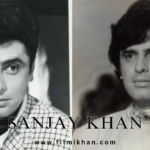
Discover the enchanting life story of Nirupa Roy, the timeless actress who graced Hindi cinema with her exceptional talent and captivating performances. We unravel the captivating journey of this cinematic legend, from her early days to becoming the beloved matriarch of Indian cinema.
Early Life and Bollywood Debut:
She was born as Kokila Kishore Chandra Bulsara; 4 January 1931 in Kalwada, Valsad, Gujarat. Nirupa Roy’s journey into the world of Bollywood began with. Her innate passion for acting and dedication to her craft quickly set her on the path to stardom.

Rise to Prominence:
Nirupa Roy’s rise to prominence came with unforgettable performances in films like Do Beegha Zameen (1953), Munimji (1955), Bhai Bhai (1956), Ram Aur Shyam (1967), Raja Aur Rank (1968), Aan Milo Sajna (1970), Deevar (1975), Amar Akbar Anthony (1977), Betab (1983), Mard (1985), Ganga Jamuna Saraswati (1986) and Laal Badshah (1999).
In 1946, Nirupa Roy and her husband responded to an advertisement in a Gujarati newspaper looking for actors. Roy’s husband encouraged her to give audition, she was selected and started her career in acting with the Gujarati film Ranak Devi (1946). The same her she worked in her first hindi film Amar Raj.
She largely acted in mythological films of the 1940s and 50s. She played the role of Parvati with Trilok Kapoor who played Shankar in the film Har Har Mahadev (1950), which was highest grosser of the year. Her image of a goddess became very strong and people used to visit her home and seek her blessings. She worked with Trilok Kapoor, Bharat Bhushan, Balraj Sahni and Ashok Kumar.
Her ability to seamlessly portray diverse characters, from the loving mother to the resilient woman, captured the hearts of audiences across the nation.

Versatility in Acting:
Known for her versatility, Nirupa Roy effortlessly embraced a wide range of roles, showcasing her acting prowess. Whether playing the self-sacrificing mother or the strong-willed protagonist, she left an indelible mark on every character she portrayed. In the 1970s, she was known as Amitabh Bachchan on screen. Her role in film Deewar (1975) and its dialogues with reference to mother and son became famous.
Endearing On-Screen Collaborations:
Roy’s on-screen chemistry with renowned co-stars such as Trilok Kapoor added to the magic of her performances. They worked together around 18 films, her memorable collaborations with celebrated filmmakers solidified her status as a sought-after actress in the Indian film industry.

Personal Life and Philanthropy:
Beyond the silver screen, Nirupa Roy’s personal life reflected her warmth and compassion. She was married to Kamal Roy and had two children named, Yogesh and Kiran Roy. After her death they engaged in property dispute and received major coverage in media.
Accolades and Legacy:
Nirupa Roy died on 13 October 2004, due to cardiac arrent at the age of 73. Her contributions to the Indian film industry were duly recognized with accolades such as Filmfare awards (3 times, Filmfare Best Supporting Actress Award for Munimji (1956), Chhaya (1962) and Shehnai (1965) ) and Filmfare Life Time Achievement Award in 2004. Her enduring legacy continues to inspire generations of actors and remains an integral part of Indian cinematic history.

Conclusion:
As we reflect on the life and career of Nirupa Roy, let’s celebrate the enduring legacy of this Bollywood matriarch. Her timeless performances, dedication to her craft, and impact on the industry make her an unforgettable icon. Join us in honouring the life and contributions of Nirupa Roy, a name etched in the heart of every cinema enthusiast.
Several articles have been written in Nirupa Roy’s memory. Her dialogue from the film Deewar became iconic and her acting in her films are considered to be landmark in Bollywood.







